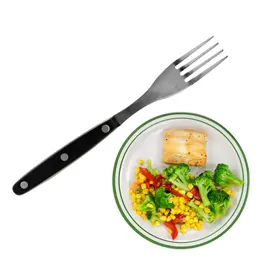Can you think yourself thin? Research says that while your thoughts don’t influence how your body handled calories, they have a lot to do with how much you eat and how full you feel afterward.
Eating and feelings of fullness are more complicated than you might expect. It turns out that not only is our appetite controlled by hunger hormones like ghrelin, it is also controlled by habits, previous experiences and an innate need to conform to social expectations or norms.
Researchers have demonstrated that the sizes of the portions we take are altered by the size and even the color of the plates we use. Big plates cause us to take larger portions and the closer the color of the plate is to the color of the food we are putting on it, the more we will pile on.
Our feeling of fullness or satiety is also influenced by our perceptions. Experiments where subjects were given identical smoothies but differing amounts of fruit included was reported to subjects led those who thought they were eating more to feel full for longer. Similar effects are seen with such simple things as food labels where a food is described as either a snack or a meal can alter fullness as can information about the relative amount of calories in a food.
It appears we also learn to feel full and that our expectation for fullness based on previous experience can profoundly affect how quickly we feel full. People tend to feel less full with foods they have not tried before and therefore have no experience on how much it will take to lead to satiety.
Even social expectations can affect our appetites. When we are in a social situation where others are eating large portions, we tend to select portion sizes that compare to what others are eating than what we know to be the appropriate size. In other words, we feel we are eating less if we don’t eat as much as those around us even though we may be eating much more than we actually need.
However, this perception issue goes beyond simply choosing food and feelings of satiety. When you think you haven’t eaten too much, your body will grow hungry again sooner than when you think you’ve had enough. On the contrary, when you think you’ve had more than you actually have, you are more likely to stay full longer than you might have otherwise.
Over the past several decades, portion sizes at restaurants have doubled if not tripled in size. This leads us to expect larger portions, and feel like we aren’t actually eating much when given a proper serving. Along with this growth of portion sizes are the waistlines of many Americans. The more we think we’re supposed to eat, the more we end up eating and the larger we become.
As you are trying to lose weight, you can try to adjust your perception of food to your advantage. Instead of concentrating on a portion being small, try to think about how much food there is in front of you. Use physical and mental reality checks to help you make portion choices. Smaller plates, measuring devices and even simple comparisons using common articles like your thumb, fist, dice, computer mouse or a tennis ball will help keep your selection appropriate.
As you apply these reality checks it becomes a process of restraining yourself to think of food in a more neutral manner and not let perceptions influence your choices as much as they may be doing now.

